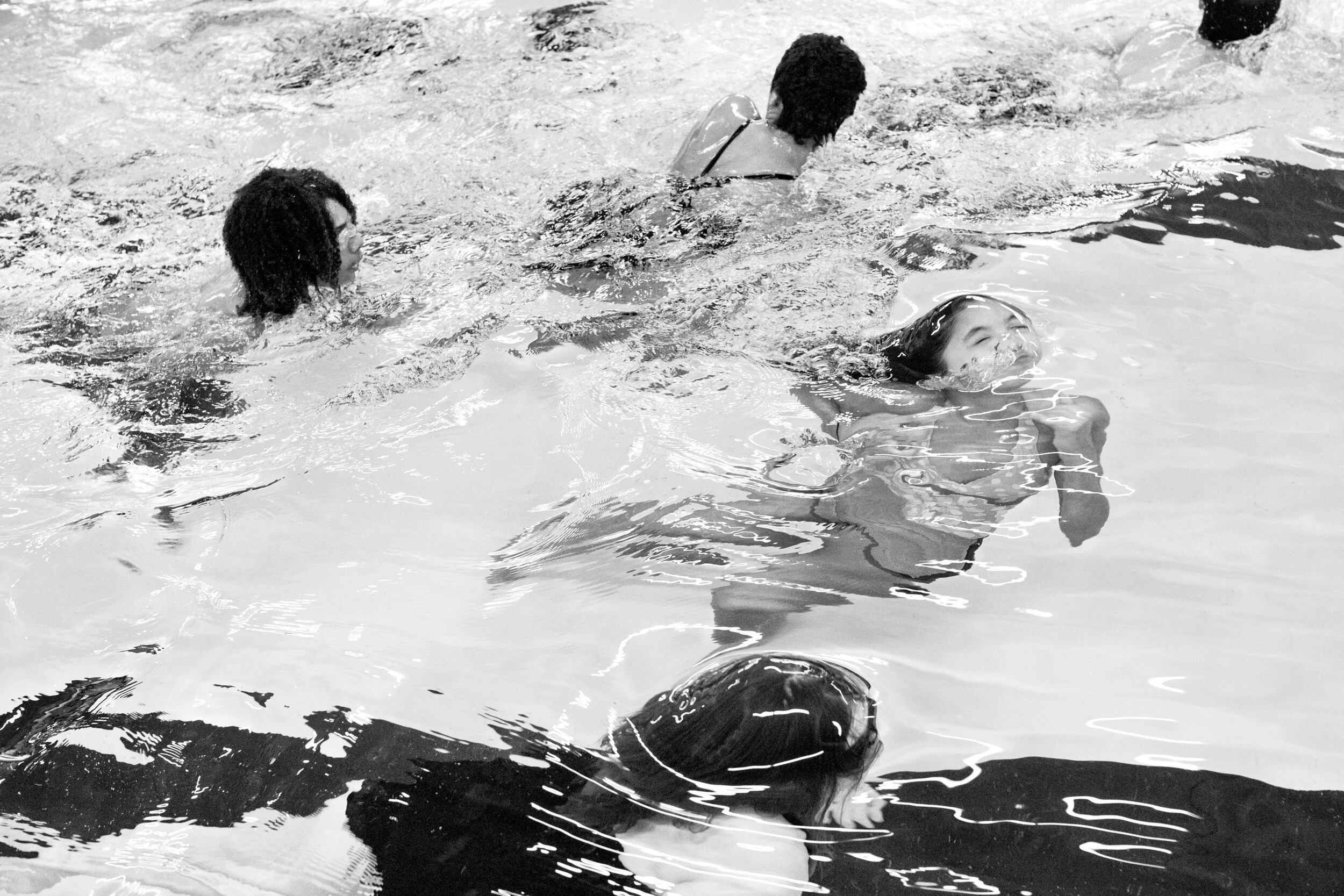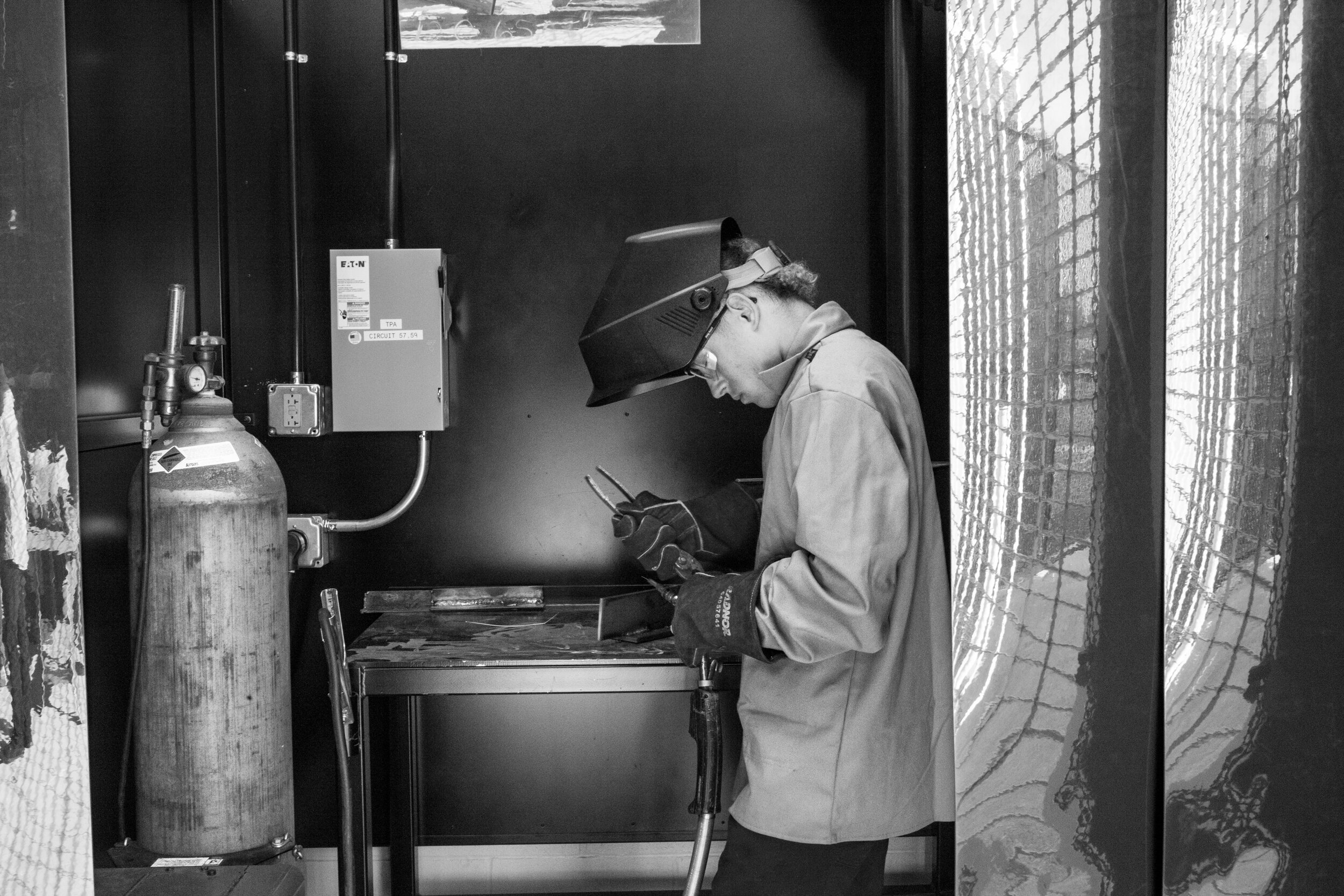CHANGING MINDS was a commission from the George Gund Foundation to photograph Cleveland city and charter schools and show how the city has re-envisioned public education. The project included an exhibit of 60 black and white photographs and a printed annual report, all designed by Nesnadny + Schwartz.
Artist Statement
In 1972, a time of transformation on many fronts, I was a fourth grader at a New York public school that had recently ended the requirement that girls wear dresses or skirts. I remember well the hot pants with a red satin heart, and suede-fringed go-go boots that I wore. I was ten years old.
One day, my class received an assignment to write a poem. I had no idea how, and I was panicked. But I came up with a solution: copy the poem printed on my favorite pillowcase.
My teacher spoke with me after class. “I’d like you to write your own poem, Lisa. In your own words.”
I was mortified at being caught. But Mrs. Manila was kind to me, and did not humiliate me in front of the class.
Upon my first visit to a public school in Cleveland, I was reminded of that experience, and transported back to one of the best parts of being a kid in school: being with adults who respect you. Adults who know that kids are capable and discerning.
I felt at ease in the Cleveland schools I visited, and came to realize that was because students, staff, teachers and principals were all comfortable in their schools. They own the place.
At one elementary school, I saw a boy eating a snack in a common area. Just then the principal walked by, addressed him by name, and matter-of-factly told him to put the food back into his backpack: “You know the rules.” He also matter-of-factly put his snack away. Her authority wasn’t questioned, but he also wasn’t shamed.
Everywhere I went I saw students working in small groups, reading books, analyzing soil samples, conferring on a new choreography, or working with a 3D printer. Teachers in art classes and honors physics classes alike sat down next to students to see the problem from their students’ perspective.
Some children’s schedules included one-on-one instruction, or participation in a psychologist led conversation about how to read social cues, or time to take a break and walk down the hall with a dean of students and school culture, who literally walks the hallways all day checking in with the middle schoolers. He, like most of the teachers and staff I met, is the oil that makes the engine run smoothly: students trust and feel safe with him. It struck me that there seemed to be no strangers in the schools. Everyone belongs.
What I found in the district and charter schools in Cleveland are extraordinary staff who recognize young people’s hunger to learn and to belong. Schools that empower those adults to listen to students. In one instance, a high school social studies teacher sensed something amiss in his class. It was soon after an act of violence in the city and the students were rattled. The teacher threw out his lesson plan and invited his students to reflect on what it means to feel safe. They wrote and then spoke eloquently, movingly, about the fears they live with—on behalf of themselves and their family members; how they cope in a world fraught with aggression, and their ambitions to make the world a better place. I am inspired that these young people will be in charge one day.
Being in these schools in Cleveland made me love school again, a place where ideas and personalities fly around, and where it’s okay to be ourselves.
Changing Minds The George Gund Foundation and the Cleveland Plan




















